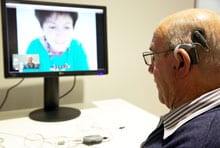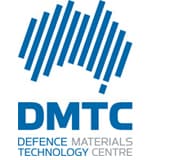The Awards for Excellence in Innovation 2015 were presented at the Australia 2040 Forum on Tuesday 26 May in Canberra.
The CRC Association Awards for Excellence in Innovation were initiated in 1999 to recognise outstanding examples of the transfer of CRC research results, knowledge and technologies that have been developed for a wide range of users of research, including the community, companies and government agencies.
Up to four awards were available for innovation with demonstrated impact for Australia. The impact might arise from innovation in the application and use of research or from innovation in education and training or public outreach activities. The judges were delighted to present two awards in 2015.
HEARnet®: Online and Learning
The WHO identifies hearing loss as the world’s most common sensory disability. Often it goes untreated due to lack of awareness of new diagnostics or treatments. To address this, The HEARing Cooperative Research Centre developed the Hearing Education and Research Network (HEARnet®).
HEARnet Online delivers current, evidence-based, interactive information about:
- hearing healthcare and diagnostics
- hearing technology and treatment innovation
- hearing protection and hearing loss prevention.
HEARnet Online supports healthcare professionals, clinical organisations, hearing and communication researchers, medical practitioners, educationalists, and the public interested in hearing health, uses social media to extend outreach and incorporating accredited online training resources (HEARnet Learning®) specifically developed to target the different needs of this range of end-users.
DMTC Boron Carbide Ceramic Armour Technology
Given the various operational environments in which our soldiers are deployed, the ADF identified a need to have an indigenous capability to produce hard armour ceramic plates. Boron carbide is the third hardest material in existence, offering superior performance-to-weight over other materials and is therefore highly suited to body armour applications. However, it is difficult to manufacture curved, near-net shape products. The DMTC established a project to develop a new manufacturing technique to produce boron carbide armour plates. A collaborative team was assembled comprising ADA, CSIRO, VCAMM, DSTO and University of Melbourne. The project has successfully developed a unique process that allows for near-net shaping of thin, highly shaped, curved ceramic elements, that meets Defence end user requirements.




